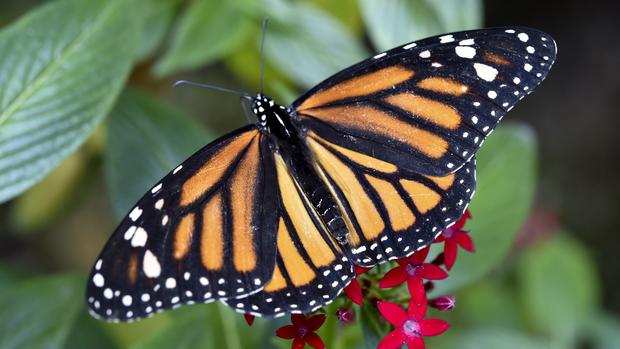California's Central Valley is sinking -- here's why
California's drought emergency is creating a crisis in one of the world's most important farming regions, the San Joaquin Valley -- the land is becoming as unstable as its water supply.
Every six weeks, Michelle Sneed visits a white shed, checking the pulley system and recording a measurement. The numbers show that the ground beneath her feet is sinking, reports CBS News correspondent Ben Tracy.
"We're measuring the highest rates we've ever measured here, among the highest rates ever measured in the entire world," said Sneed, a hydrologist at the U.S. Geological Survey.
Sneed said parts of California's Central Valley are dropping by one foot each year. Some areas are ten feet lower than they used to be.
This is why the ground is collapsing: California's farmers are pumping groundwater as fast as they can in order to keep their crops alive during a drought that has left them high and very dry. But when this much water is pumped out of the aquifer below ground, the clay between the pockets of water collapses and the ground starts to deflate like a leaky air mattress.
The sinking is buckling the walls of irrigation canals, damaging pipes, creating giant sink holes and cracking homes. The Russell Avenue Bridge at the Delta-Mendota Canal has dropped so much, the water will soon flow over it instead of under it. Fixing the damage could cost more than $100 million in tax dollars.
"You just have to keep going deeper and deeper," Arthur & Orum Well Drilling Vice President Steve Arthur said.
Some wells are now 2,500 feet deep -- that's two Empire State buildings underground. Water that deep is thousands of years old. But it's desperately needed because more than half the country's fruits, vegetables and nuts are grown in California.
"You tell the farmer he can't drill anymore wells ... he can't farm as many acres. You're gonna go into the store buy a gallon of a milk for $10 , loaf of bread for $5. Then the public is gonna say, 'Hey, what happened?"' Arthur said.
NASA's senior water scientist, Jay Famiglietti, uses satellite data to show the depletion of California's water resources. The state has lost 16 trillion gallons in the past four years, enough to fill Lake Mead -- the largest reservoir in the country -- twice.
So what happens when the water is simply gone?
"That's a question that all of us first of all have a difficult time really fathoming. ... If we still want to have agriculture, we'll have to come up with the water from some other place," Famiglietti said.
But for now, the drilling continues even with the ground all around it caving in.
